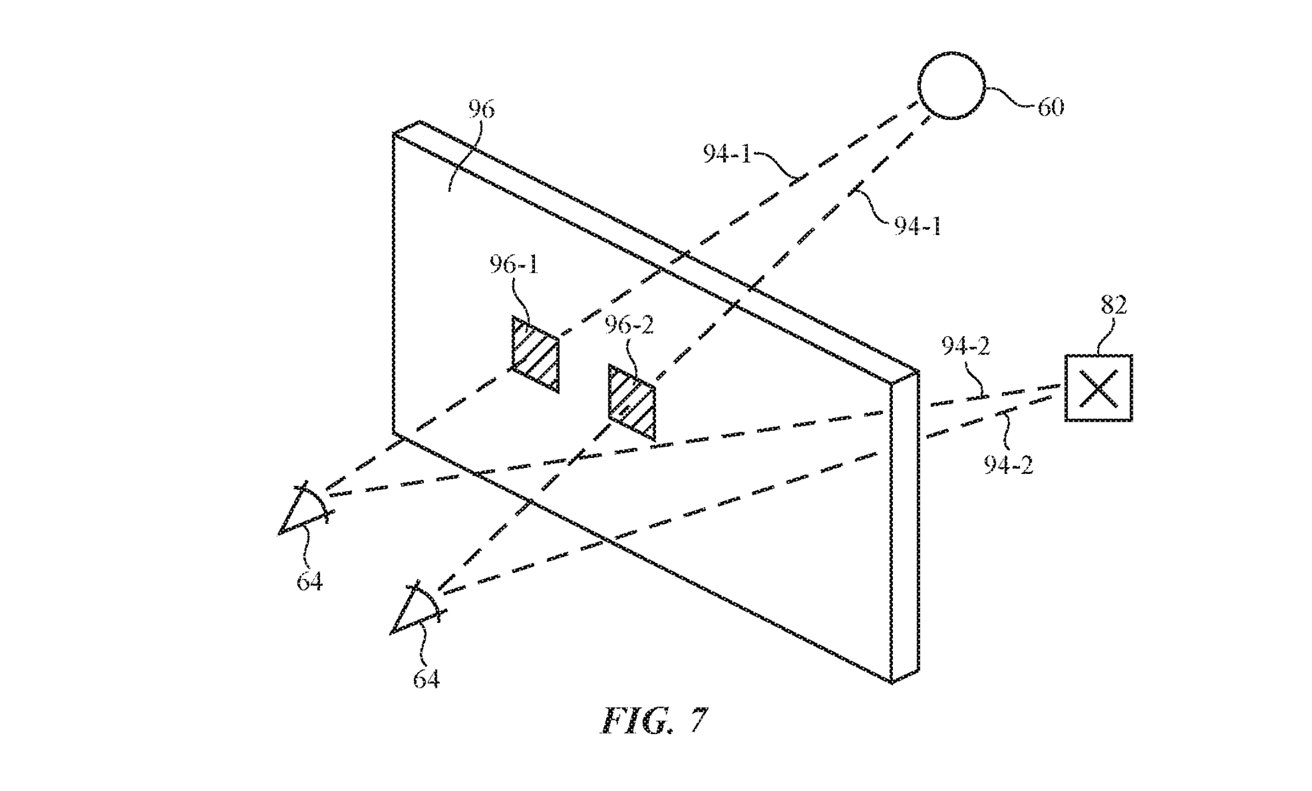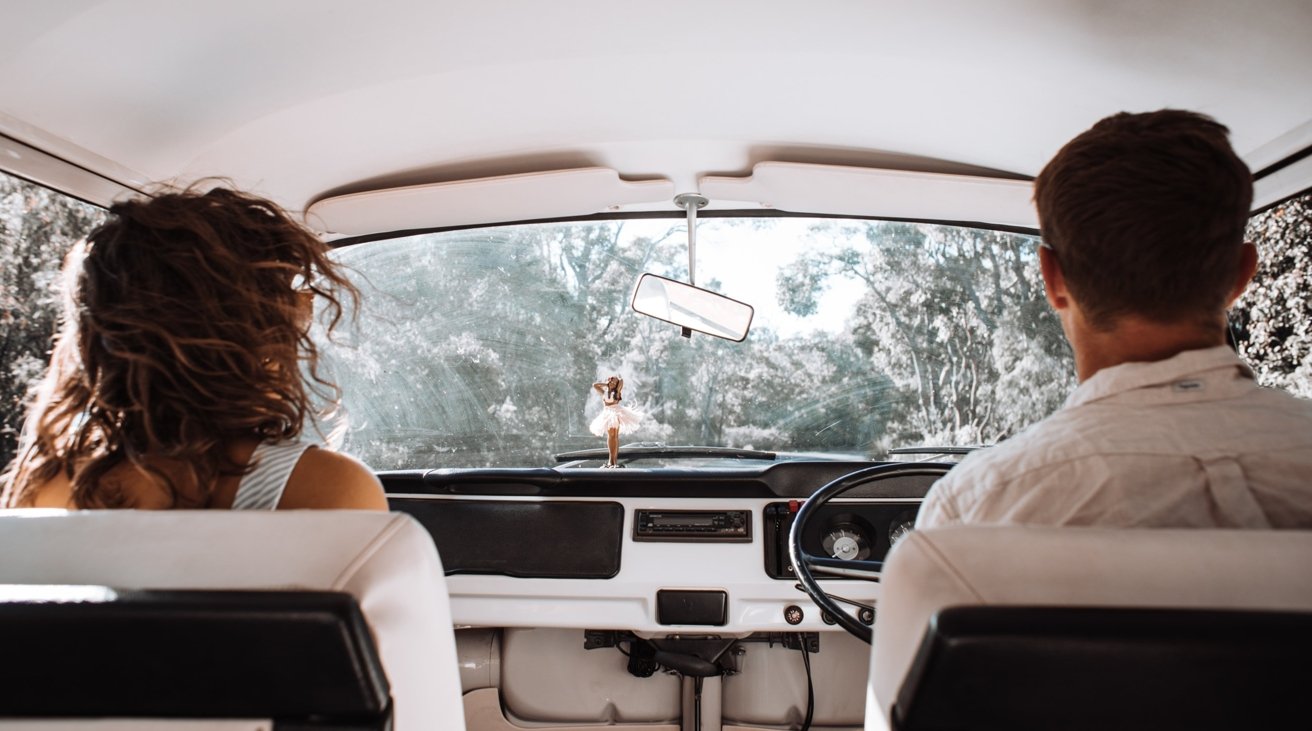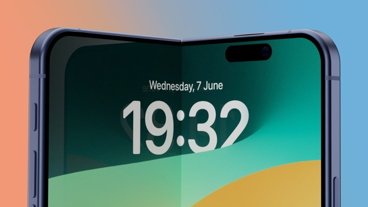The "Apple Car" could prevent drivers and passengers from being blinded by the sun's glare or dazzled by headlights, using an automatic shading system to block bright, direct light from eyes.
A common hazard when driving is glare, with extremely bright conditions, reflections from windows on buildings, other vehicle headlamps at night, and other light sources can interfere with the driver's vision. As well as potentially making it harder to see the road, it can also be a distraction that draws the driver's attention away from inbound dangers.
While this could be partially solved by using blinds or the driver using sunglasses in some cases, these solutions aren't ideal as they require the driver to react to road conditions.
Granted by the U.S. Patent and Trademark Office on Tuesday, the patent for an "Active Glare Suppression System" offers a form of visual Active Noise Cancellation, one that could stop bright lights from reaching the driver's eyes at all, while keeping the rest of the view clear.
Apple's system has two main sections, dealing with detection and suppression respectively. For the former, Apple's proposed system relies on sensors inside the car to collect many data points.
This data covers a few elements, including where the driver's eyes are in the vehicle, ambient light levels, and where the sources of bright light are outside of the vehicle. By knowing where the driver's eyes and the light sources are located, the system could work out the path of light, and what elements of the windscreen or other windows that light passes through.
This information is provided to circuitry that manages the suppression element. Light modulators cover windows, the windscreen, and mirrors of the vehicle, arranged in a grid, and are used to suppress the light.
 By knowing the eye position and where bright light is coming from, the system can block the light at specific points in the windscreen.
By knowing the eye position and where bright light is coming from, the system can block the light at specific points in the windscreen. These modulators can change between transparent and opaque based on commands from the control system. Apple suggests the modulators could be produced from liquid crystal, photochromic, or electrochromic layers, which could make the glass dull, dark, or reflective.
In theory, the modulator positioned in the grid at the exact point that the bright light passes through could be activated to turn opaque, blocking light from reaching the driver's eyes completely. Only that specific point is activated, with the rest of the window or mirror kept see-through to maximize the view of the driver.
The patent first surfaced as an application in October 2018, and was originally filed on September 1, 2016.
It lists its inventors as Hyungryul J. Choi, Arthur Y. Zhang, Cheng Chen, Graham B. Myhre, Malcolm J. Northcott, Matheen M. Siddiqui, Russell Y. Webb, and Matthew E. Last.
Apple files numerous patent applications on a weekly basis, but while the existence of a patent indicates areas of interest for its research and development teams, there's no guarantee the company will use the concepts in a future product or service.
Tinting glass has appeared in a few patents relating to the often-rumored Apple Car. One from November 2019 for "synchronized windows" would use light modulation to create a privacy system that would give passengers illumination and a view out of the vehicle, without lighting up the inside for others to see.
Apple also proposed a "moon roof" and windows with automatic tinting in April 2020, by using layers of glass and segments with adjustable layers.
August 2020 brought with it proposals to embed displays in the windscreen and other windows, potentially enabling a full display to be used, or more simply, speed and other basic details for the driver.
Apple has also suggested that the windscreen could have a "notch" to hold a collection of self-driving sensors, echoing the design of the iPhone.
 Malcolm Owen
Malcolm Owen







-m.jpg)






 Christine McKee
Christine McKee
 Marko Zivkovic
Marko Zivkovic
 Mike Wuerthele
Mike Wuerthele

 Amber Neely
Amber Neely
 Sponsored Content
Sponsored Content
 Wesley Hilliard
Wesley Hilliard









11 Comments
I don't think Apple car could block glaring lights because for that to happen, the car needs to be launched first.
This would be a welcome innovation.
One of the most aggravating things about my 2021 Subaru Outback XT is that the EyeSight cameras block the proper function of the visors. Driving east in the morning makes me wear a baseball cap to block the sun because I cannot use the visors because of this.
Every week I see another article about this now and miraculous thing that the AppleCar will do. I predict one of two outcomes:
Either the Apple Car is suffering from terminal scope creep and will never see the light of day.
Or if the Apple Car is released and is just...a car, people will be terribly disappointed.
Right now expectations are so high that unless the Apple car can drive on water and heal the lame it will be called a failure.
There's a much easier solution that doesn't require electronics.
Polarize both windshields and headlamps at a 45 degree angle, all in the same direction, so that my own headlights are polarized the same way as my own windshield, but oncoming headlights are polarized at 90 degrees with respect to my windshield. It won't help with the sun as much as oncoming headlights, but it'll help some.
Can't take credit for that idea; my high school physics teacher voiced it in class one day. Some time in the 70s.
The "Apple Car" is a misnomer. It is a service not a product. Apple is trying to make the user environment within an autonomous vehicle as comfortable as possible. They recognized that people could be spending an hour or more a day inside autonomous vehicles with nothing to do. Rather than let boredom set in, Apple wants to make this time as useful or enjoyable as possible. Apple is not really working on the problem of how to make cars avoid pedestrians. They are leaving that one up to all the other companies working on it. Instead, they are working on the interior of the vehicles with technology to connect people to others, play augmented reality games, view all forms of media and do all they other things people can with Apple devices. The "Apple Car" will be a service both in terms of features users can get if they purchase a car from an automaker, upgrade their existing automobile or simply ask Siri to "send me an Apple Car."